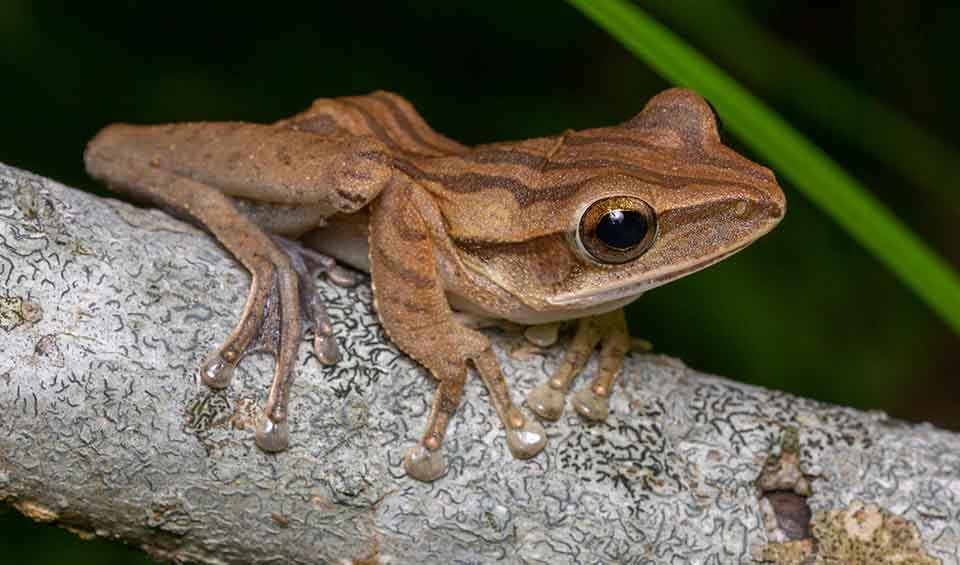Despite its name, there’s nothing ordinary about this frog. It’s known for its adaptability, resilience, and unusual parenting habits. With a light brown to yellowish body, dark stripes running from its nose to its shoulders, and big, expressive eyes, this frog blends easily into its surroundings. It’s especially common in gardens, rice fields, forests, and even city parks, showing just how well it can adjust to different environments, including places changed by humans.
What sets the common tree frog apart is its clever way of protecting its eggs. While many frogs lay eggs directly in ponds or streams, this one uses a more advanced strategy. The female creates a foamy nest by beating her legs rapidly during egg-laying. This foam, often attached to leaves or surfaces just above water, shields the eggs from drying out and from predators. When the eggs hatch, the tadpoles drop down into the water below, ready to continue their development in safety. This reproduction method allows the common tree frog to raise its young even in small or temporary water sources, giving it an edge in environments where water may be limited.
Another cool thing about the common tree frog is how far it can jump. Thanks to its strong legs and small size, it can leap its own body length many times. This is handy when escaping predators or navigating the trees and plants it calls home. The frog also has sticky toe pads, allowing it to climb walls, glass windows, and tall plants with ease. These features make it one of the most acrobatic frogs in its range. During the rainy season, their loud, sharp croaks can be heard all around—especially from males calling to attract mates. Their calls often sound like short, repeated honks or barks, and they’re most active after sunset.
Distribution
 Bangladesh
Bangladesh Bhutan
Bhutan Brunei
Brunei China
China India
India Indonesia
Indonesia Japan
Japan Laos
Laos Malaysia
Malaysia Myanmar
Myanmar Philippines
Philippines Singapore
Singapore Taiwan
Taiwan Thailand
ThailandAnything we've missed?
Help us improve this page by suggesting edits. Glory never dies!
Suggest an editGet to know me
Terrestrial / Aquatic
Altricial / Precocial
Polygamous / Monogamous
Dimorphic (size) / Monomorphic
Active: Diurnal / Nocturnal
Social behavior: Solitary / Pack / Herd
Diet: Carnivore / Herbivore / Omnivore / Piscivorous / Insectivore
Migratory: Yes / No
Domesticated: Yes / No
Dangerous: Yes / No




